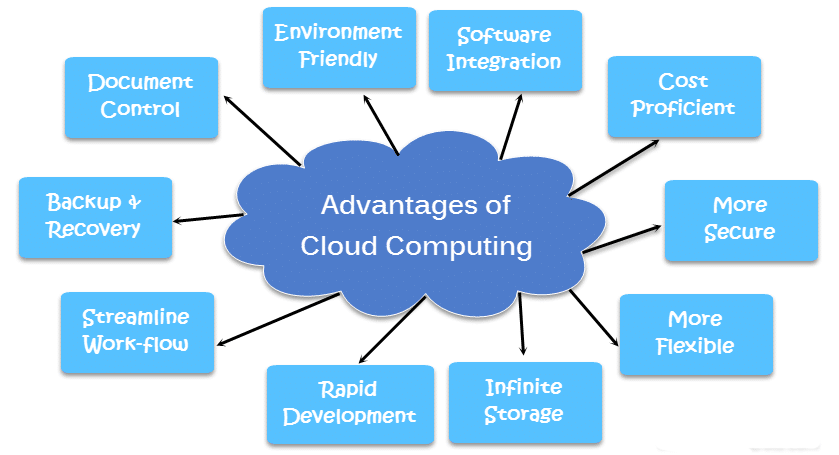
Related Articles

Pen Testing
RSK BSL Tech Team
April 3, 2025
|
|

Pen Testing
RSK BSL Tech Team
March 31, 2025
|
|

Pen Testing
Praveen Joshi
March 27, 2025
|
|

Pen Testing
RSK BSL Tech Team
March 25, 2025
|
|

Pen Testing
RSK BSL Tech Team
March 20, 2025
|
|

Pen Testing
RSK BSL Tech Team
March 18, 2025
|
|

Pen Testing
RSK BSL Tech Team
March 10, 2025
|
|

Software Development
RSK BSL Tech Team
February 24, 2025
|
|

Pen Testing
RSK BSL Tech Team
February 19, 2025
|
|

Software Development
Praveen Joshi
February 11, 2025
|
|

insight
Praveen Joshi
January 31, 2025
|
|

AI Tech Solutions
Praveen Joshi
January 27, 2025
|
|

Software Development
Praveen Joshi
January 20, 2025
|
|

Software Development
Praveen Joshi
January 13, 2025
|
|
 |
|

Mobile Application Development
Praveen Joshi
January 10, 2025
|
How Does Cloud Computing Enable Scalability in Web Rapid Application Development?
The incorporation of cloud computing technologies has revolutionized rapid web application development. Developers may speed up the entire development lifecycle by utilizing the scalability, flexibility, and cost-effectiveness of cloud platforms. Various cloud service providers like AWS, Azure, and Google Cloud are available to choose from.
Teams can streamline coding, testing, and deployment processes with simple access to a variety of cloud-based tools and resources. This strategy not only reduces time to market for web rapid application development. But also improves the performance and dependability of the application.
Additionally, developers may simply expand their applications using cloud computing. Plus, they can make use of the strong data processing and storage capabilities of cloud platforms. They can build dependable web apps to suit the demands of today’s fast-moving digital landscape.
Role of Cloud Computing in Enabling Scalability in Rapid Web Application Development
Cloud computing plays a pivotal role in enabling scalability in rapid web application development. It does that through a range of features and services that promote flexibility and efficient resource management. The following features of the rapid application development cloud enable all this:
1. On-Demand Resources:
Cloud platforms provide on-demand access to computing resources, such as virtual servers, storage, and databases. Developers can instantly provision or de-provision resources based on the application’s requirements. This is essential for accommodating variable workloads and scaling up or down as needed.
2. Elasticity:
Cloud platforms offer elasticity, allowing applications to automatically adjust resource allocation based on traffic fluctuations. This auto-scaling ensures that the application remains responsive and cost-effective during peak loads, minimizing the risk of downtime.
3. Load Balancing:
Cloud providers offer load-balancing services that distribute incoming traffic across multiple instances of the application. This ensures even resource utilization and improved fault tolerance, preventing overloads on specific servers.
4. Containerization and Orchestration:
Technologies like Docker and Kubernetes enable the creation and management of containers for applications. These containers can be quickly deployed and scaled, simplifying the process of handling microservices-based applications.
5. Serverless Computing:
Serverless computing platforms, such as AWS Lambda and Azure Functions, abstract server management entirely, enabling developers to focus solely on code. These services automatically scale in response to incoming requests, allowing for ultra-fast and efficient scaling in web rapid application development.
6. Global Reach:
Cloud providers have data centers distributed worldwide. This global presence makes it easy to deploy applications close to end-users, reducing latency and improving the user experience.
7. Content Delivery Networks (CDNs):
CDNs are often integrated with cloud services, facilitating the distribution of static content to edge locations. This ensures fast content delivery by caching content closer to users, reducing the load on the main application servers.
8. Database Scaling:
Cloud databases, such as Amazon RDS and Azure SQL Database, offer automated scaling options to handle increased data demands. These services can scale vertically (increasing resources on a single server) or horizontally (adding more database instances).
9. Pay-as-You-Go Pricing:
Cloud computing’s utility-based pricing allows organizations to pay for resources only when they are in use. This cost-effectiveness encourages developers to experiment with different scaling options without incurring unnecessary expenses.
10. DevOps and Continuous Integration/Continuous Deployment (CI/CD):
Cloud platforms offer tools and services that streamline the DevOps pipeline, making it easier to deploy changes rapidly and automatically. It ensures that new features and updates can be delivered to users without delays.
11. Managed Services:
Cloud providers offer managed services for various application components, such as authentication, messaging, and storage. These services often include built-in scaling and high availability features, reducing the complexity of application development.
Key Considerations to Take Care for Web Rapid Application Development with Cloud Computing
The following are the key considerations you need to take care of:
- Security: Prioritize robust security measures to protect data and user information.
- Cost Management: Monitor and control cloud costs to avoid unexpected expenses.
- Compliance: Ensure compliance with relevant data protection and regulatory standards.
- Scalability Planning: Develop a clear scaling strategy to handle traffic spikes effectively.
- Backup and Recovery: Implement robust backup and recovery procedures for data resilience.
- Performance Optimization: Continuously optimize application performance for responsiveness.
- Monitoring and Logging: Set up monitoring and logging to detect issues promptly.
- Resource Governance: Manage resource allocation efficiently to avoid wastage.
- Vendor Lock-In: Consider vendor lock-in risks and aim for portability.
- Data Migration: Plan for seamless data migration when switching cloud providers.
- Disaster Recovery: Establish a disaster recovery plan to address unexpected outages.
- Team Training: Invest in training to ensure the team is proficient with cloud services.
- Documentation: Maintain detailed documentation for future reference.
- Version Control: Use version control systems to track changes and collaborate effectively.
- Testing Strategies: Employ robust testing and quality assurance practices.
These pointers are applicable to all rapid application development services that use cloud platforms at any scale. Adhering to these tips can effectively improve the chances of getting better results.
Praveen Joshi
Praveen is a seasoned IT Solutions Leader and Director at RSK Business Solutions, a technology-driven IT Consulting Company that specializes in Bespoke Software Development, Agile Consulting, Mobile App Development, Smart Sourcing, and much more. For the last 17 years, he has been delivering quality custom IT solutions that help businesses achieve their goals.

 Share
Share Post
Post Tweet
Tweet Copy
Copy


